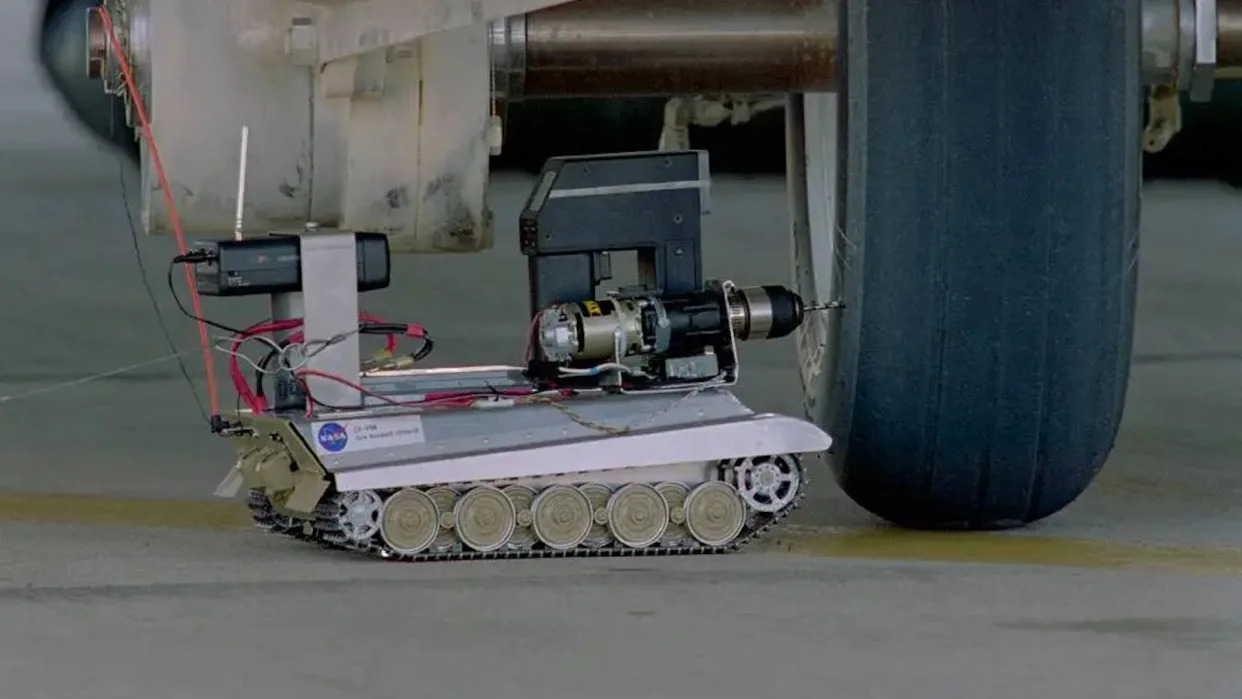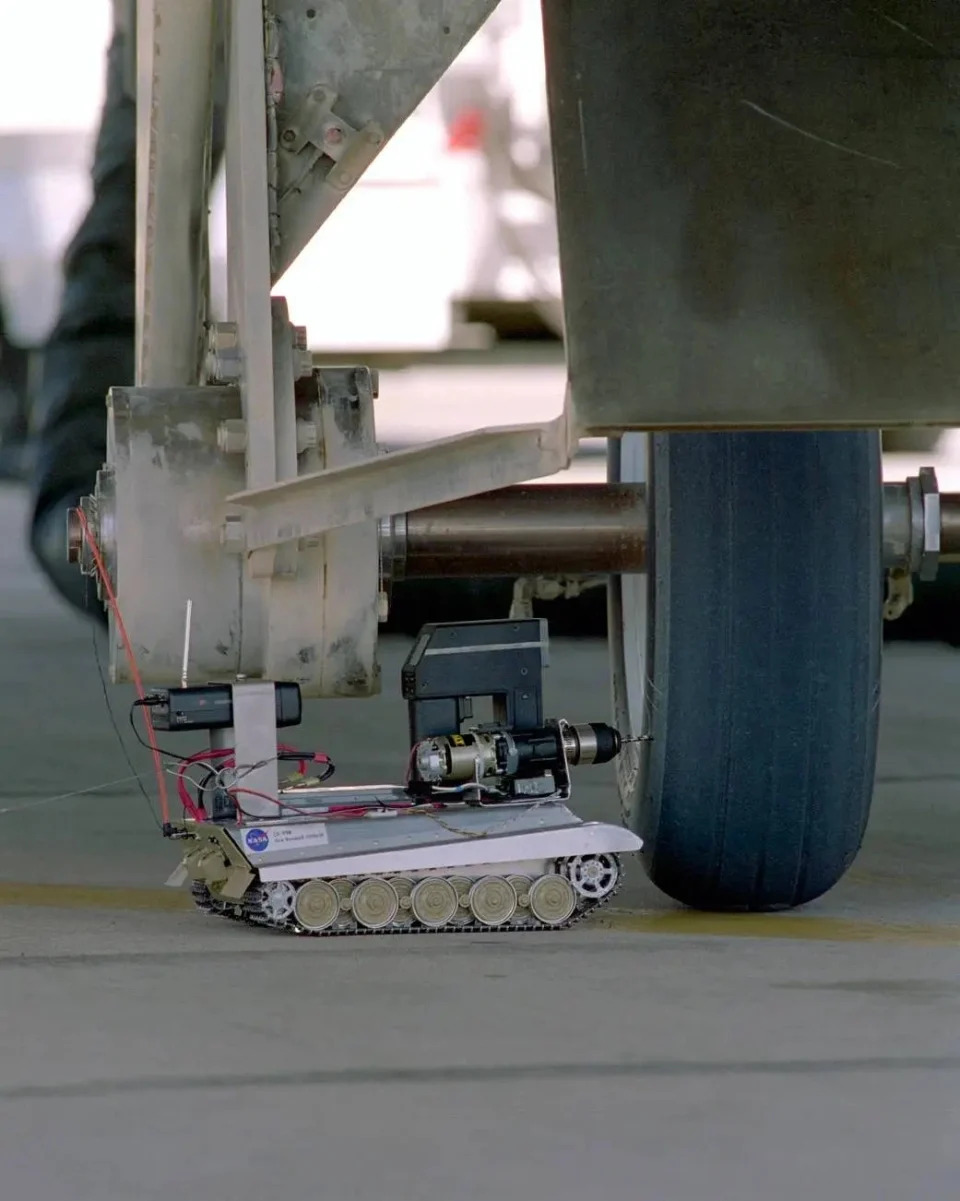James Gilboy
Mon, November 13, 2023

CR-990 Tire Assault Vehicle in action
Outside of baseball and apple pie, there are two things we as Americans all consider a part of our national identity: Going to space, and redneck engineering. Normally, those two things don't overlap at all, but they did for a moment under NASA's Space Shuttle program. That's how we got the CR-990 Tire Assault Vehicle, which was built to blow up Space Shuttle tires that were too dangerous for a human to touch.
The TAV's story begins in 1993, when NASA was upgrading the Space Shuttle's landing gear. After gliding down through the atmosphere, the 240,000-pound Space Shuttles would land at speeds up to 288 mph, placing enormous stress on their tires. They had to endure triple the load of a Boeing 747 tire, so they weighed 230 pounds apiece according to Michelin, and were nitrogen-filled to as high as 373 psi.
That'll make anyone who has worked with truck tires shudder—semi tires can kill you when they blow out. Bigger, more pressurized Shuttle tires were even more dangerous, bursting with force equivalent to 2.5 sticks of dynamite, according to NASA. That's enough to injure people as far as 50 feet away, or deafen you from 100 feet. NASA's test process of landing a modified airliner on one of the tires could make them pop on landing, but the ones that didn't were more dangerous. Apparently, even a person's touch could be the straw that breaks the camel's back, so to speak.
NASA tried multiple ways of popping dangerous tires, notably a bomb disposal robot, but it was imperfect. The bot was expensive, too bulky to drive easily under the test plane, and it wasn't always available. At some point though, a NASA radio contractor by the name of David Carrott had an idea—presumably while browsing a toy catalog.

Tamiya 1/16-scale Tiger II remote controlled tank. Tamiya
Carrott proposed using a homemade contraption he called the CR-990 Tire Assault Vehicle, or TAV. The Online Tank Museum indicates it was built from a 1/16 scale Tamiya remote-control Tiger II tank (seen above), using the kit's lower hull, suspension, tracks, and rear plate. But 75 percent of it was custom: The sides and roof of the hull, side skirts, and upper glacis (front armor) were all custom-fabricated from metal.
In place of its turret, he installed a small camera next to a DeWalt drill motor with a 3/8-inch bit. It drew power from a Black and Decker battery that also powered drill motors on the treads, and transmitted a video signal to a portable black-and-white TV. In all, the doohickey cost less than $3,000 to build, where NASA's previous bomb disposal bot used for deflation duty apparently cost $100,000.

CR-990 Tire Assault Vehicle in action. Dennis Taylor via NASA
Though the TAV arrived toward the end of the tire test program, it managed to successfully detonate nine dangerous tires in service of NASA. That a modified model tank survived one of the blasts, much less several, is impressive in its own right. In fact, the TAV still exists today: It's on display at the Mojave Air and Space Port in California. Space travel may be an expensive endeavor, but there are times when the simplest, cheapest solution is the best one. Especially if it's as funny as a kitbashed RC tank with a drill on top.
Got a tip or question for the author? You can reach them here: james@thedrive.com
No comments:
Post a Comment